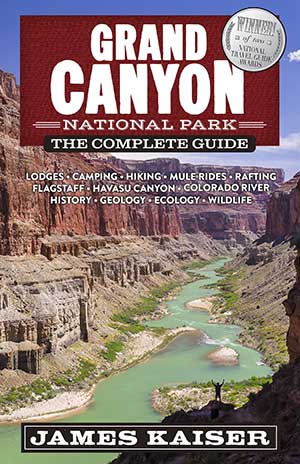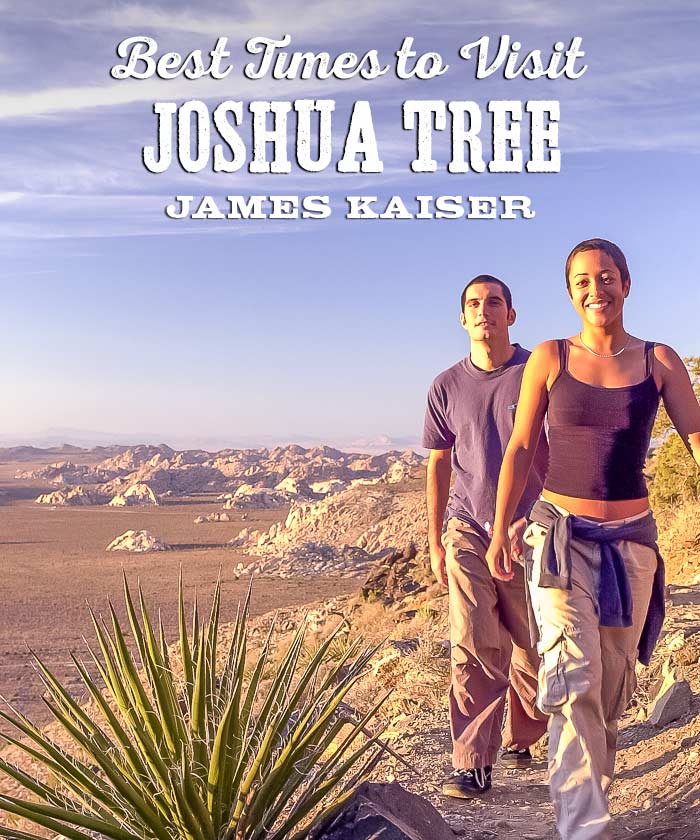
The best time to visit Joshua Tree National Park depends on what you’re looking for. Want mild temperatures perfect for hiking or rock climbing? Visit in the early spring (March, April), when desert wildflowers bloom, or late fall (October, November), when soft autumn light illuminates the park. Looking to avoid the crowds and score a campsite at one of the best campgrounds? Plan a winter visit. Want to view Joshua Tree’s famously starry skies while enjoying balmy temperatures at night? Summer is best. No matter when you visit, however, the Joshua Trees and towering rock formations will be unforgettable.
Joshua Tree Temperatures
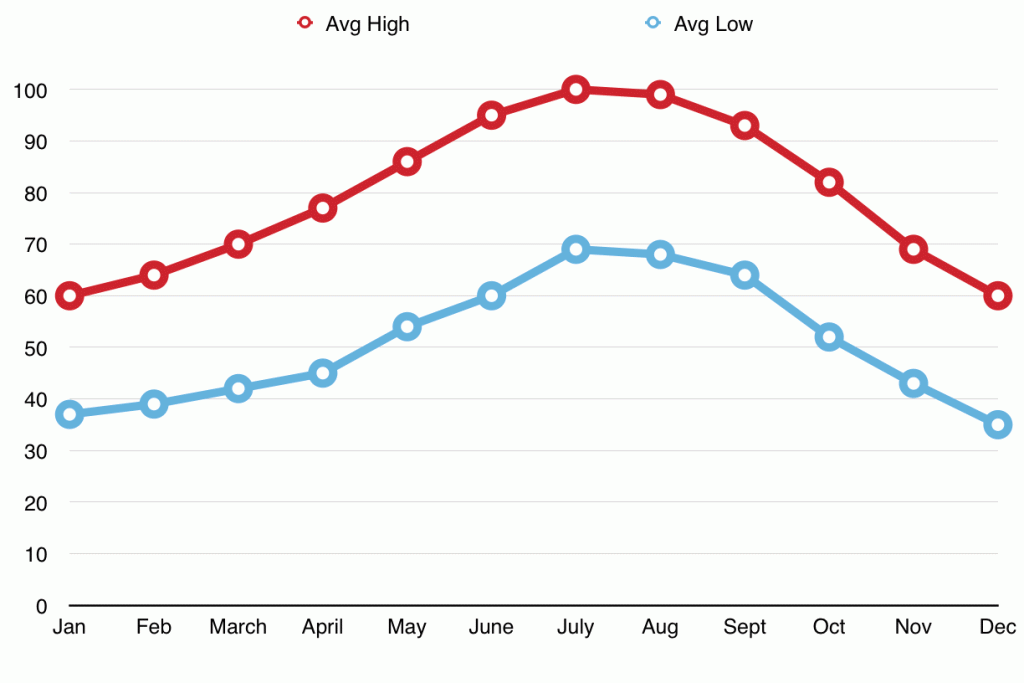
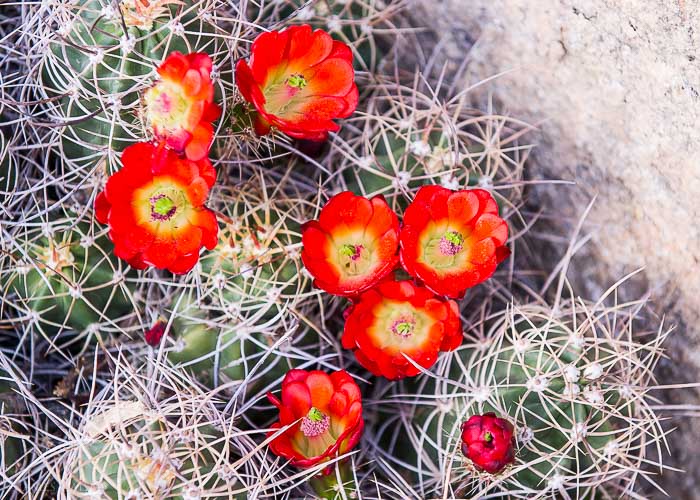
Spring in Joshua Tree National Park
Early spring is one of the best times to visit Joshua Tree National Park. Temperatures are mild during the day and crisp at night. Spring is also famous for stunning wildflowers. If you enjoy outdoor activities like hiking and rock climbing, March, April and early May are some of the best months to visit Joshua Tree. The only downside: the crowds. If you visit mid-week the crowds aren’t bad, but weekends can get busy, especially during school vacations and holidays like Easter weekend. Visitation also spikes during the spring edition of the Joshua Tree Music Festival, held just outside the park. Although finding a campsite in the park can be difficult in the spring, there are some good campgrounds just outside the park.

Summer in Joshua Tree National Park
Summer is the least popular season in Joshua Tree due to the scorching hot daytime temperatures. This is the desert, after all, and daytime temps in June, July and August often top 100˚F (38˚C). This makes outdoor activities like hiking and rock climbing uncomfortable and potentially dangerous. Heat stroke is a concern when temperatures spike. In the summer it’s best to limit physical activity to the early morning or late afternoon. You should also drink plenty of water. So why visit Joshua Tree in the summer? Limited crowds, for one thing. It’s much easier to score a great campsite during the hot summer months, even on weekends. Summer is also a great time for stargazing. Temperatures are delightful at night, and August is famous for the annual Perseid Meteor Shower.
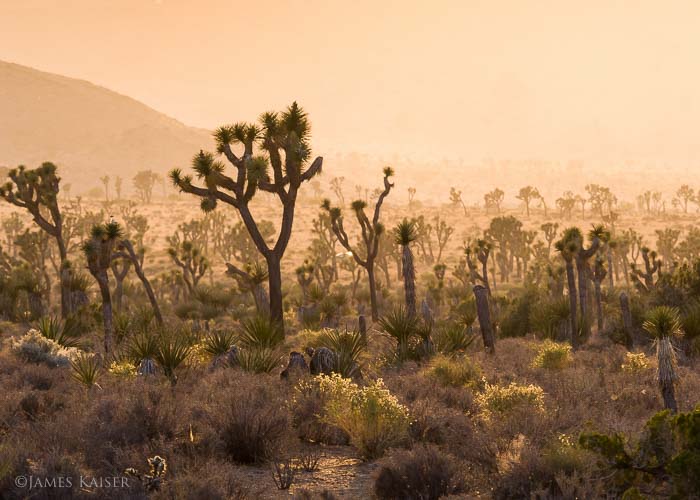
Fall in Joshua Tree National Park
Late fall is another great time to visit Joshua Tree National Park. Temperatures are still hot in September, but things start to cool off in October. If you’re a photographer, you’ll love the way autumn’s golden light illuminates the wild rock formations. October and November are two of the best months to visit Joshua Tree. Not only are the temperatures nice, the crowds are slightly smaller than they are in the spring. There are also several great festivals outside the park, including the fall version of the Joshua Tree Music Festival and Bhakti Fest.
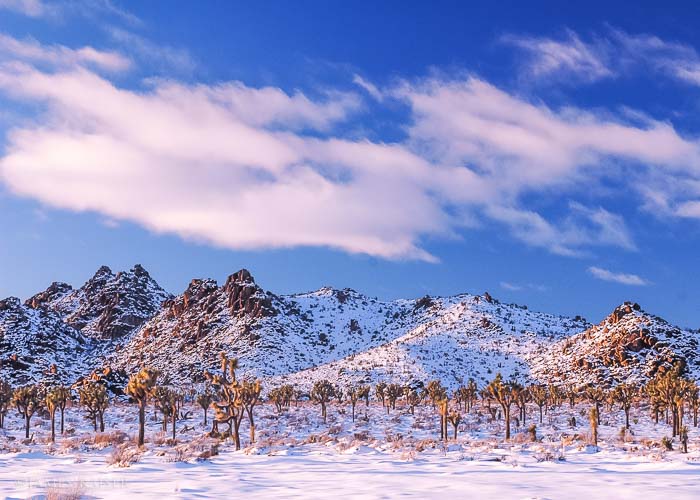
Winter in Joshua Tree National Park
Chilly temperatures keep many visitors away from Joshua Tree National Park in the winter. In recent years, however, December, January and February have become much more popular. Much of this is driven by rock climbers, who descend on Joshua Tree when popular summer destinations like Yosemite are covered in snow. Snowfall is rare in Joshua Tree, but it does happen. If you’re lucky enough to visit during a snowstorm, enjoy the beautiful scenery!
